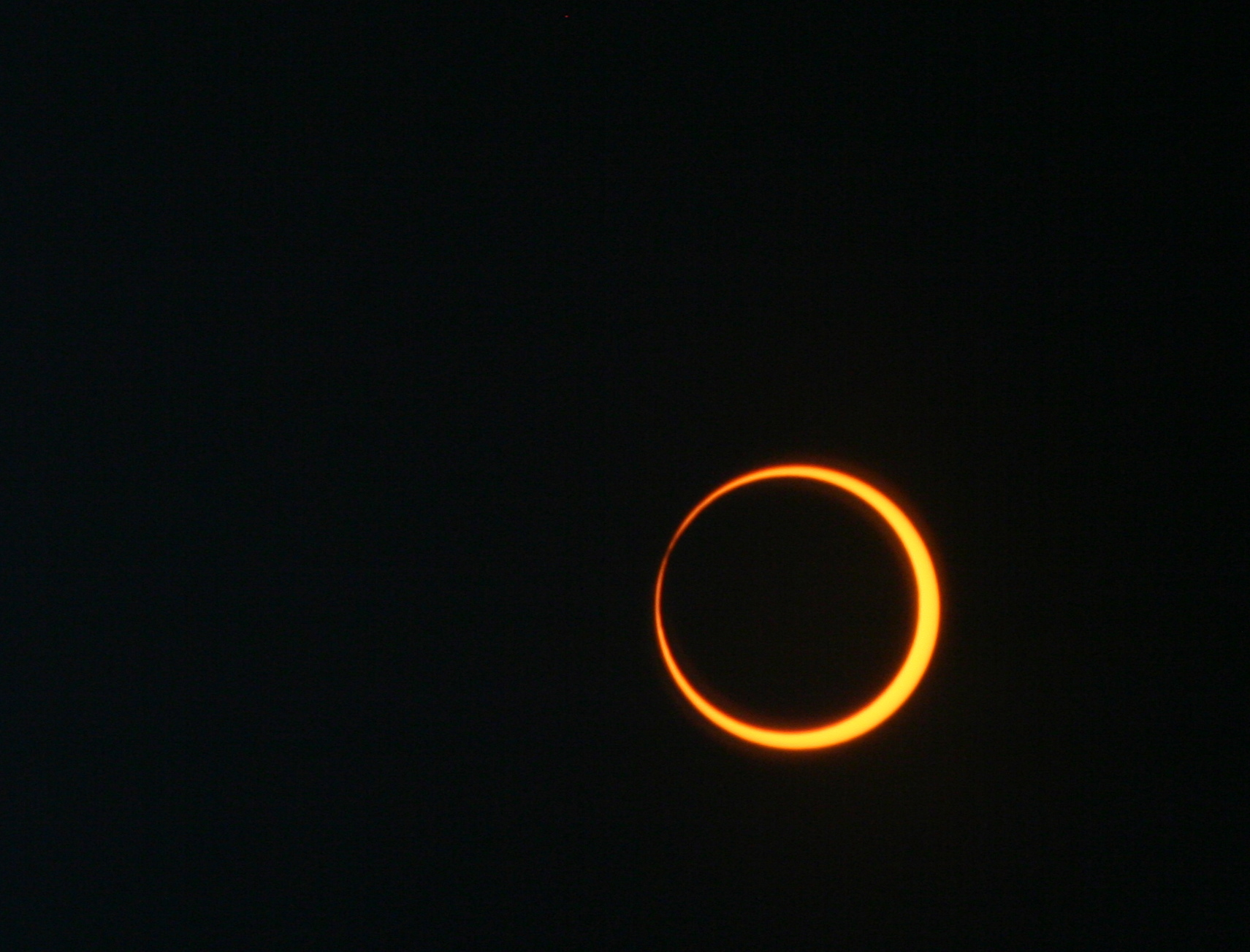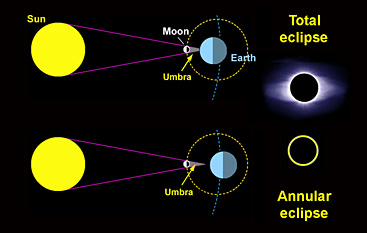On Saturday, October 14th 2023, Geneseo (NY) experienced a partial solar eclipse. About 30% of the Sun was blocked by the Moon. This is only a glimpse of what will occur in Geneseo in April 2024.
Annular (Partial) vs Total Solar Eclipses
Annular eclipses are different from total solar eclipse in that the Moon doesn’t cover the whole Sun. Instead, it leaves a small ring all around, making the Sun appear as a ring. The english word “annular” is from the latin word “annulus”, which means “ring”. Below is a picture taking during an the 2012 annular eclipse.

The two, total and annular, happen because the orbit of the Moon is slightly elliptical. Therefore the distance between the Earth and Moon changes slightly enough to allow for the two configurations. During an annular eclipse, the Moon is slightly farther away from the Earth while during a total eclipse, the Moon is then slightly closer to the Earth.

To convince yourself, look at a distant object and put your fist between your eye and the object. Now move your fist closer and then further away from your eye. You’ll see that the distant object is less covered by your fist when it is farther. The same happens with the Moon as seen from Earth; when the Moon is further away, it doesn’t appear large enough to cover the Sun’s full disk, giving us an annular eclipse. During a total eclipse, the moon is larger in angular size than the Sun, allowing it to completely block it out. If the Moon was was just a little farther away, or if the Moon was a tiny bit smaller in physical radius, we would never be able to see a experience total solar eclipses on Earth. Isn’t that amazing?!

Safety
NEVER look directly at the Sun during an eclipse with naked eyes!!! Use the special glasses that has solar filters, making sure they are ISO 12312-2 compliant. If you had a pair from the 2017 eclipse, throw it away as it may have been damaged or lost some of its filtering properties, and those damages may not be easily seen by eyes. If you don’t have a safe pair, …
- glasses can be purchased locally from the Livingston County Tourism site
- make a pinhole camera. This will allow you to see indirectly an image of the Sun during the eclipse.
Annular Solar Eclipse Path – April 14, 2023
At Geneseo (NY) the partial eclipse started at 11:59 AM, reached its maximum at 1:13 PM, and was over by 2:27 PM, lasting a total of 2 hours and 28 minutes.
Other Great Resources to Explore
NASA Website on the 2023 annular eclipse
Great American Eclipse Website
American Astronomical Society (AAS) Website on the 2023+2024 Eclipses
